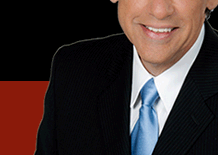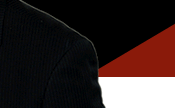|
SAYING GOODBYE - Part 3
From Washington, it would be a two-hour ride for Roy and
me on an aging Eastern Airlines 727, down to Orlando to meet
up with Gary Eldridge, KC8UD. These days Gary resides in Laurel,
Maryland where he is Operations Manager for studio operations
at the world headquarters of the Seventh-Day Adventist Church.
Back when Roy put out the call for ham radio operators who
were camera people to volunteer to shoot "Frontier,"
Gary was working at the video studios of Kettering Hospital
in the suburb of Dayton, Ohio. He offered his vacation time
to handle the shoots at Cape Canaveral, Florida, and at the
Marshall Spaceflight Center in Huntsville, Alabama. We met
at Orlando International Airport, rented a car and headed
down the "B-Line" Expressway to our hotel home in
Cocoa Beach for the next two days.
A bit of an aside here. If you have been following the sequence
of events as they unfolded, by now you probably realize that
Roy had a rather interesting way of doing a multi-location
show. We would travel to a given location on the day prior
to a shoot, have a good dinner, get up early and be ready
to work at dawn's early light. As soon as everything was recorded
on tape to his satisfaction, we would be on the first available
flight to our next destination. Except for the cross-country
jaunts, there were no days set aside specifically for travel.
That's how the two of us were able to hit so many locations
during a two-week vacation slot and still be back in time
to spend a few days relaxing with our families. It worked
like a charm, and it's the system that stayed with us through
many other video production adventures.
But back to our narrative. The Cape - more specifically the
Shuttle Launch Complex - was one of three locations where
Roy would be on camera as host and narrator. Because of this,
our normally long and leisurely dinner was a bit shortened
for Roy, because he had to write his script. Gary and I sat
around and talked for a bit, but we retired soon as well.
Now, 6:30 a.m. comes real early. That was our time to be up,
so that we could shower, have breakfast, go through base security,
and be on-location by 9:00 a.m.
Three words are appropriate here: "What a greeting"
when the three of us entered the Public Affairs Office to
pick up our guide. Starting with the dawning of the "space-race,"
Roy had been a fixture of NBC News at the Cape and everybody
knew him. It was like a big family and thanks to Roy, I had
been invited to become a part of it.
Speaking of the early days of covering launches from the
“Cape,” here's an interesting little story that
Roy told me and I want to share with you. In the beginning,
the government tried to keep the press corps at bay - well
away from the actual launch facility. The only way reporters
could be fairly certain that a launch was imminent was when
the NASA launch radio system came on the air. But nobody could
be quite certain where in the VHF Public Service Band (152
to 173 MHz) NASA launch controllers would show up. In fact,
it was this problem that lead Roy and his technical crew to
invent the world's very first "Public Service Band"
scanner radio.
I won't go into all the technical details, because it's well
beyond the scope of this article. That said, keep in mind
that this was the 1950s. All electronic gear used tubes. Transistors
were on the horizon, but integrated circuit chips and microprocessors
were only dreams. The mainstay receiver back then was the
mechanically tuned Hallicrafters S-81 "Civic Patrol"
unit that had no modern conveniences like programmable channels
and squelch controls that are common today. No, this baby
only had a tuning knob and a volume control.
Also during that era, many upscale automobiles featured an
automatic station finder called "signal seeking."
You touched a button or bar, gears began to grind, and the
radio dial scale would move up and down the AM broadcast band,
stopping on stations it heard. If you did not like that one,
push the button again, and it found another. So, using his
ham radio knowledge Roy reasoned that there had to be a way
to make the S-81 auto-tune the band and stop on a signal,
just like car radios were doing. That's just what he did,
coming up with a highly modified S-81 that now had noise free
"squelched" operation and would stop on any signal
it heard. The only signals in the band in that geographic
area were those of the NASA controllers. When they came on
the air it meant a launch was imminent and Roy's jury-rigged
scanner would stop on their frequency and let everyone listen.
Needless to say, this gave NBC Network News a decided advantage
over the competition. (And now you know the origin of scanner
radios.)
After a while it apparently dawned on NASA that it might
be a good thing to have the news people, then camped miles
down the beach, a bit closer; they were not going to go away.
America was fascinated with space, mainly because of three
well-known newsmen who were bringing it into everyone's living
room. They were the late Jules Bergman, at ABC, Walter Cronkite
at CBS, and, of course, Roy Neal at the "peacock."
My guess is that NASA decided the publicity they were getting
was good for the agency, so they opened the doors to the press
corps. Once that happened and reporters had direct lines to
Mission Control, the "mission" of Roy's makeshift
scanner radio was completed and the unit was retired from
service. Roy was not sure what became of it, but we both lamented
that by the standards of the 1990s it would have been quite
a one-of-a-kind collector's item.
So here we were, back in what was really Roy's stomping ground.
Taping in the various control rooms, training operations,
launch complexes and even the famed V-A-B where we actually
got to shoot inside the cargo bay of a space shuttle, Columbia,
which was being made flight-ready.
I was climbing the ladder 50 or 60 feet straight up while
carrying a Sony VO-4800 U-Matic portable, and tethered to
Gary by 15 feet of multicore cable which was connected to
a Thompson ENG camera. It had to be one of the most exciting
experiences of our collective lives. Not the climb - the Columbia!
Another moment that lives in my memory was out at the Launch
Complex 39, where, since April 12, 1981 shuttles have taken
to the sky. We were in our second, and final day of shooting,
and the script called for the launch pad as a backdrop - with
or without a shuttle. So the three of us were out on a gravel
road surrounded by marshland shooting stand-ups, as our NASA
assigned docent looked on. It was a bit late in the day and
the sun was at the wrong angle. A reflector was in order,
and aiming it fell to me. I was slowly backing up, and backing
up, to get just the right lighting when Roy called out in
his most serious broadcaster's voice: "Bill, stop right
there!"
I answered that the lighting still looked too harsh. Roy
looked right at me and said: "You really do not want
to go off this road. There are some really mean alligators
out there and you don't want to become their main course at
dinner, do you?"
The docent then looked at me and said "...he's not kidding.
Old 'one-eye' is probably no more that 25 or 30 feet from
here."
Not wanting to tempt fate, I took Roy's advice. We went with
the not-so-perfect lighting.
That location done, we were on our way again. After stopping
at the Delta counter in the Orlando airport to check in and
air ship all the tapes back to Alan Kaul in Los Angeles, the
three of us spent the next several hours flying first to Atlanta
and then backtracking to Huntsville. We made it to the Huntsville
Hilton just in time for a quick dinner before the restaurant
closed for the night. No, it was not all that late by our
standards, but this was the South on a weekday night. After
8 p.m., the streets were rolled up and all you could get was
room service. It was just as well, as we had an 8 a.m. call.
The welcome at Marshall was just as warm as that which we
had received at the Cape. The only difference here was that
almost everyone we ran into had a ham radio call sign as a
suffix to their name, and everyone knew Roy not only as the
newsman, but also as a friend they regularly chatted with
on the airwaves. Even so, we were not allowed inside the Spacelab
I module, because it had been sealed to prevent any sort of
contamination prior to flight. But using it as a backdrop,
Roy conducted a number of interviews after which we got as
much B-Roll as we could of the Spacelab's exterior, and the
center itself. By 3 p.m. that afternoon we were at Huntsville's
airport, bidding goodbye to Gary and heading to Houston-Hobby,
by way of Dallas.
>From the time when I was a kid watching space launches
on our 10" RCA, I had dreamed of going to the various
places where spacecraft were built, launched, and operated.
Now, a week and a half from the time Roy and I left Los Angeles,
he had made the first two parts of the dream come true. And
in a few hours we would be at the heart of U.S. manned spaceflight
operations: Mission Control at "JSC" - the Lyndon
B. Johnson Spaceflight Center, in Houston.
As it happened, Houston was the only place we could not get
a volunteer camera crew. So, Roy had me hire someone with
whom he had worked before and who was known to be the best
of the best - Bob Brandon. Actually, in hiring Bob we got
three very talented people. In addition to Bob, there was
soundman Phil Lauder, and associate Justine Schmidt. As I
recall, Phil was a licensed radio amateur. I believe they
called themselves the "Texas Crew" in that era,
and they were they always an efficient and fun bunch.
The main reason for this stop was to interview the star of
our show: Astronaut and Mission Specialist, Dr. Owen Garriott
- ham radio call letters W5LFL. The venue that Roy had chosen
was about as perfect as one could get: The "1-G Simulator"
at JSC. This is an exact replica of the shuttles that fly
in space except that it has no engines, no solid rocket boosters,
and sits horizontal, like an airplane on a runway. As it is
a full size mock-up, it's about the size of a DC-9 jetliner
and the "front office" crew area is about as crowded
as the cockpit of that airliner.
The mid-deck where Roy conducted the interview was a bit
roomier - but not very much more. It was an area about the
size of a bathroom in a luxury hotel suite, but with a lower
ceiling. Into that confined space had to go Dr. Garriott,
Roy, myself, Bob, Justine, an Ikegami HL-79A, and a Sony BVU-110
recorder. With Bob well over 6' tall and Roy being no slouch
either, how all of us fit into that confined space, lit it,
ran microphone cables and did close to 40 minutes of talking
head interview - including 'reverses' - has to be one of the
true mysteries of the teleproduction business. As usual, Roy
pulled off yet another miracle. It was followed by a dinner
thrown for us by members of the Astronaut Corps and other
JSC employees - all of whom were ham radio operators, members
of the JSC Amateur Radio Club (W5RRR) and very happy to have
been a part in the upcoming quest to conquer "Amateur
Radio's Newest Frontier."
Next week: Putting it together and the years that followed.
|

















